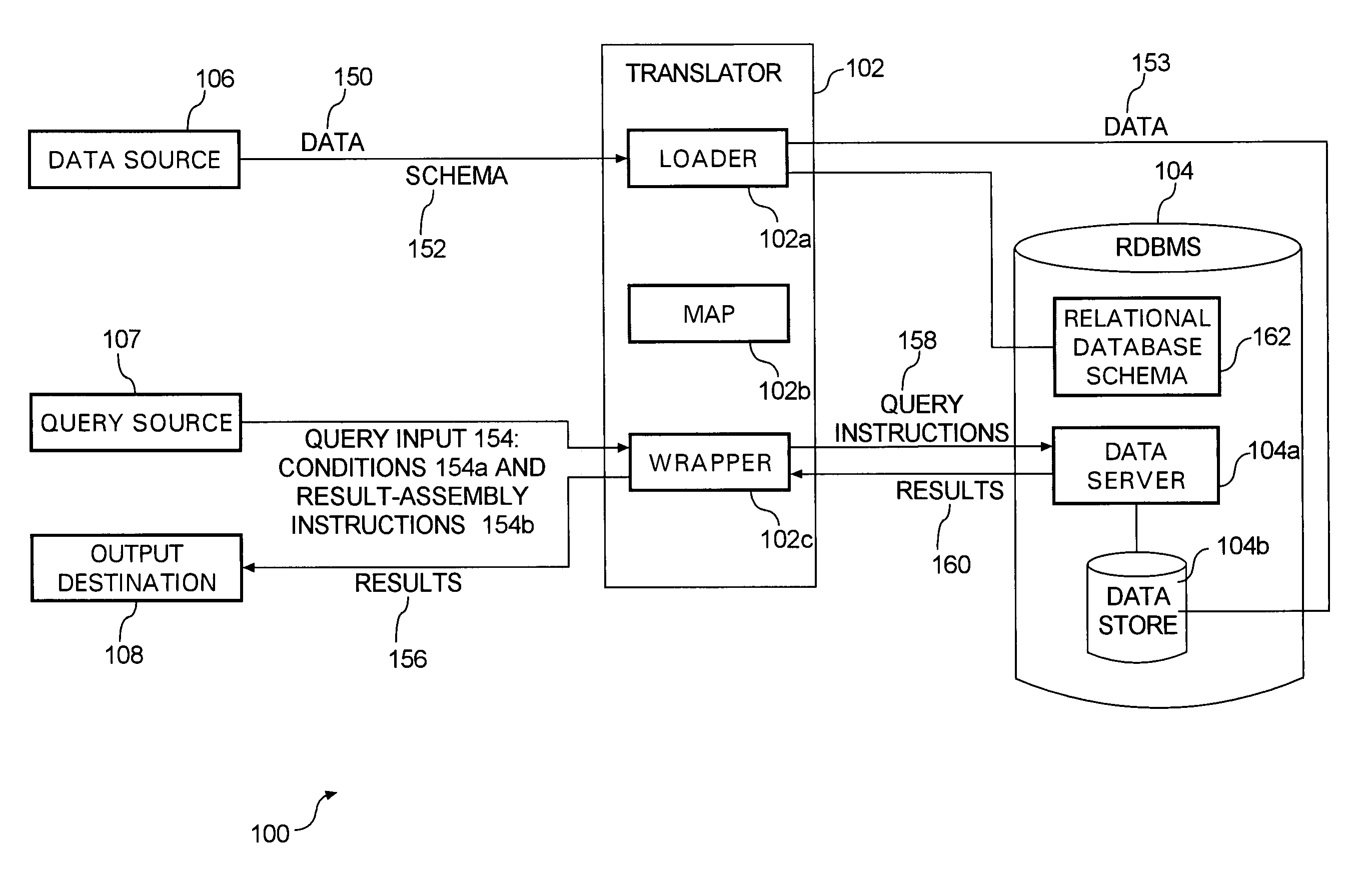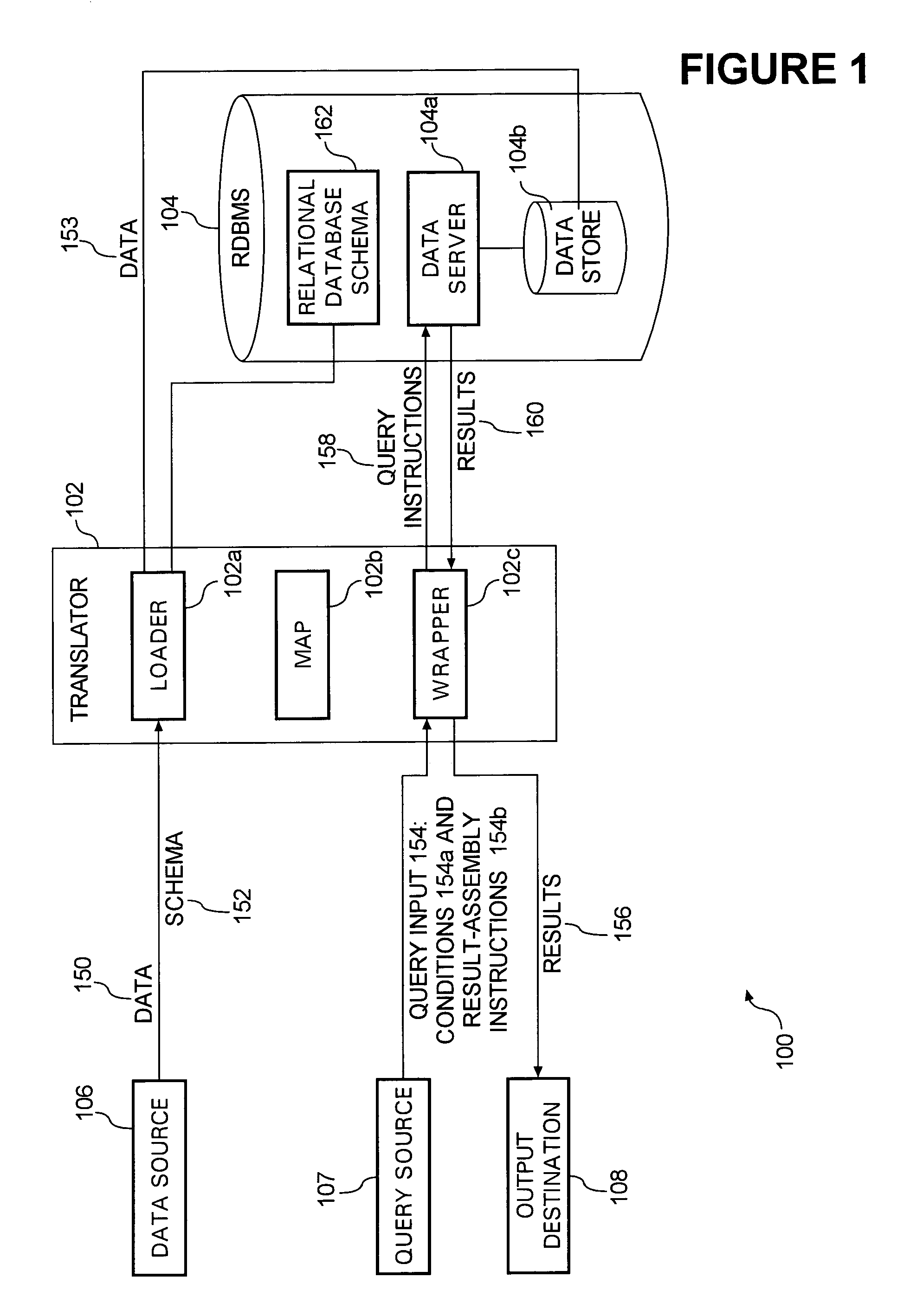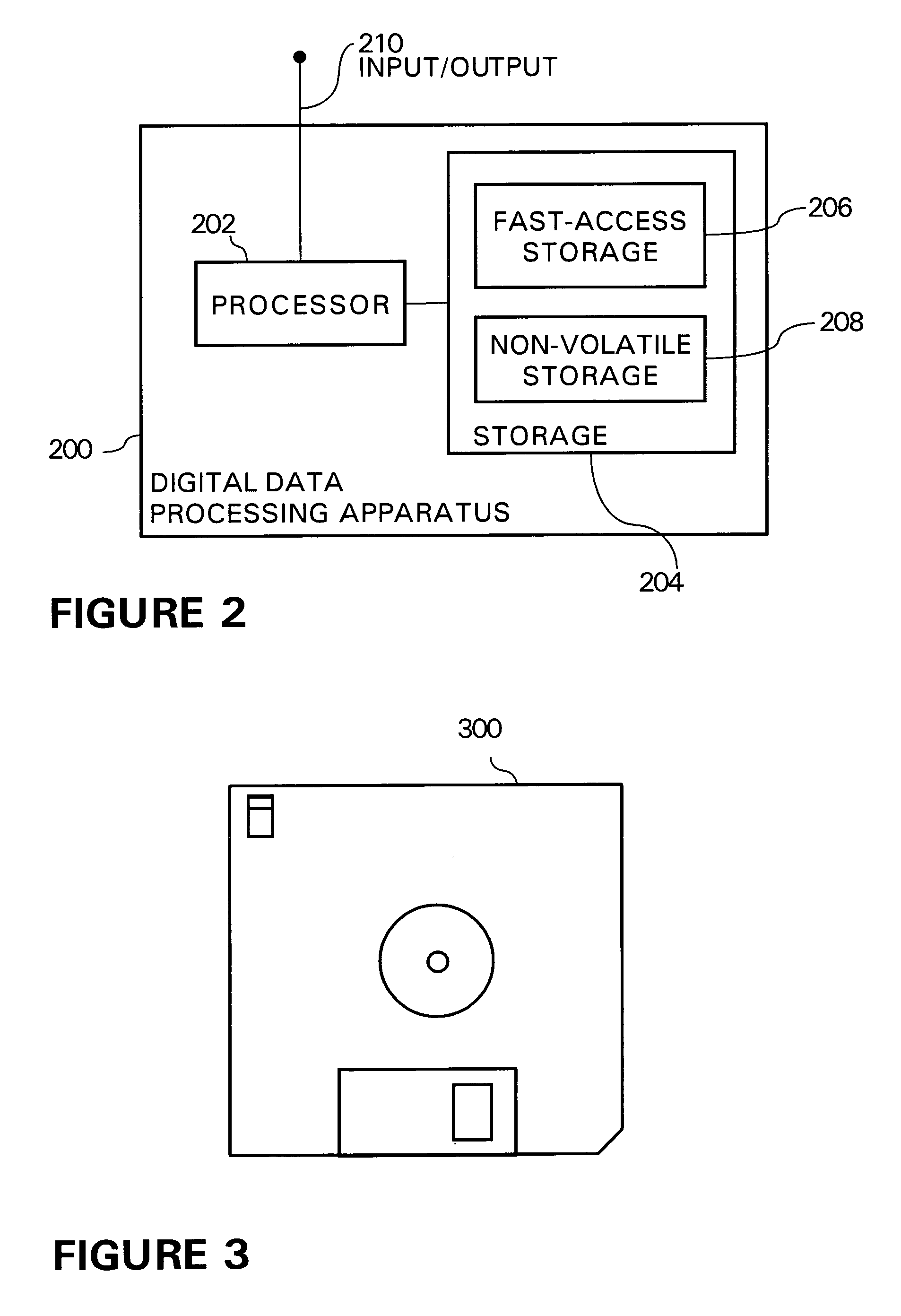System for querying markup language data stored in a relational database according to markup language schema
a markup language and schema technology, applied in the field of system and method for data processing, can solve the problems of large volume of data to further exchange, burden of universal application of changes to data, and numerous obstacles to efficiently accessing and recalling voluminous data, so as to reduce database operating costs and susceptibility to errors, and improve query optimization. the effect of efficiency
- Summary
- Abstract
- Description
- Claims
- Application Information
AI Technical Summary
Benefits of technology
Problems solved by technology
Method used
Image
Examples
Embodiment Construction
[0021]The nature, objectives, and advantages of the invention will become more apparent to those skilled in the art after considering the following detailed description in connection with the accompanying drawings.
Hardware Components & Interconnections
Introduction
[0022]One aspect of the invention concerns a data management system, configured to receive data and queries underr a markup language data schema, but to store and query the data according to a relational database schema. Although this system may be embodied by various hardware components and interconnections, the system 100 of FIG. 1 provides one illustrative example.
[0023]The system 100 is comprised of a translator 102 and relational database management system (RDBMS) 104. As shown below, the translator interacts with one or more data sources 106, query sources 107, and output destinations 108.
Relational Database Management System
[0024]The RDBMS 104 includes hardware and software components to store, retrieve, and query da...
PUM
 Login to View More
Login to View More Abstract
Description
Claims
Application Information
 Login to View More
Login to View More - R&D
- Intellectual Property
- Life Sciences
- Materials
- Tech Scout
- Unparalleled Data Quality
- Higher Quality Content
- 60% Fewer Hallucinations
Browse by: Latest US Patents, China's latest patents, Technical Efficacy Thesaurus, Application Domain, Technology Topic, Popular Technical Reports.
© 2025 PatSnap. All rights reserved.Legal|Privacy policy|Modern Slavery Act Transparency Statement|Sitemap|About US| Contact US: help@patsnap.com



